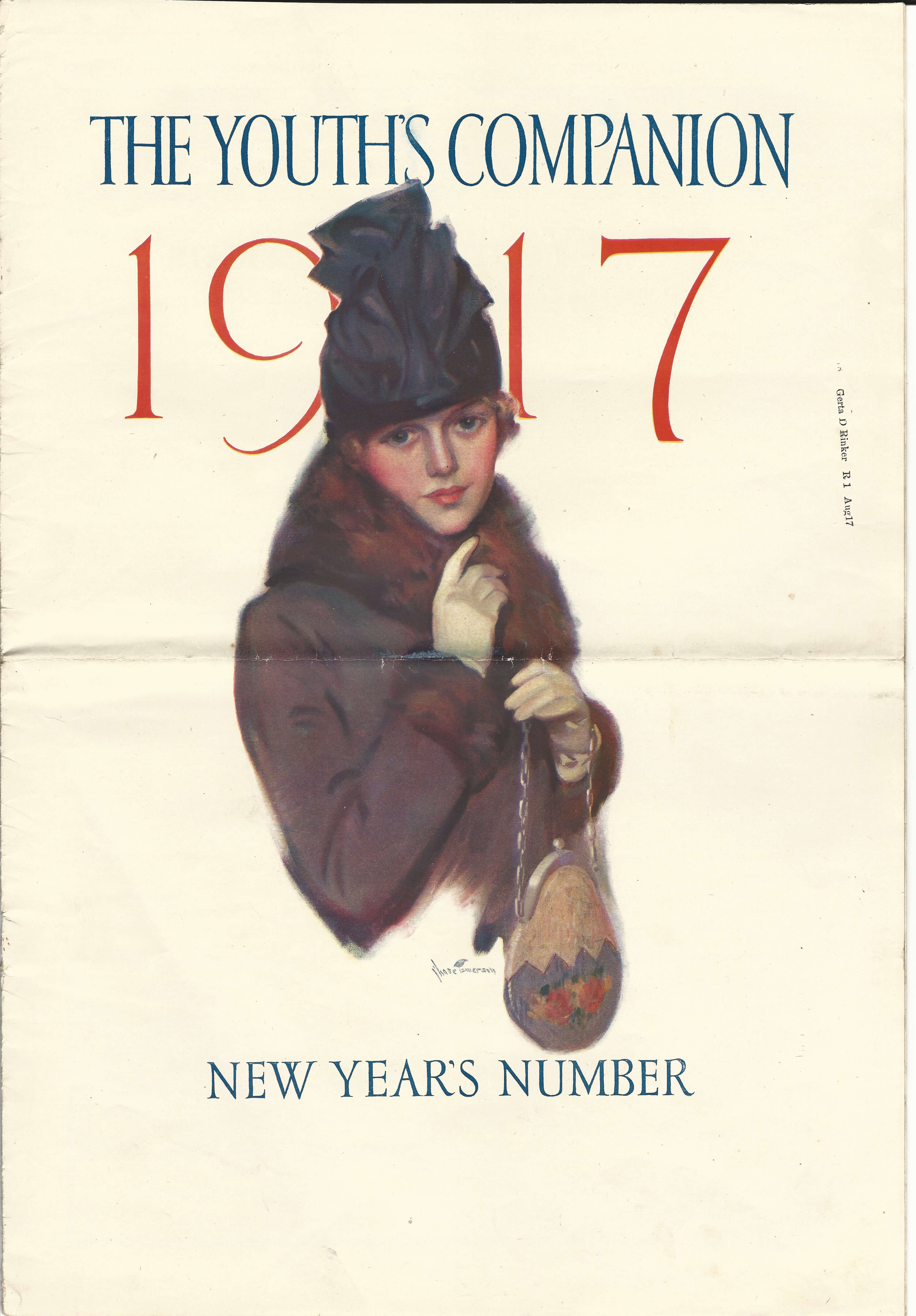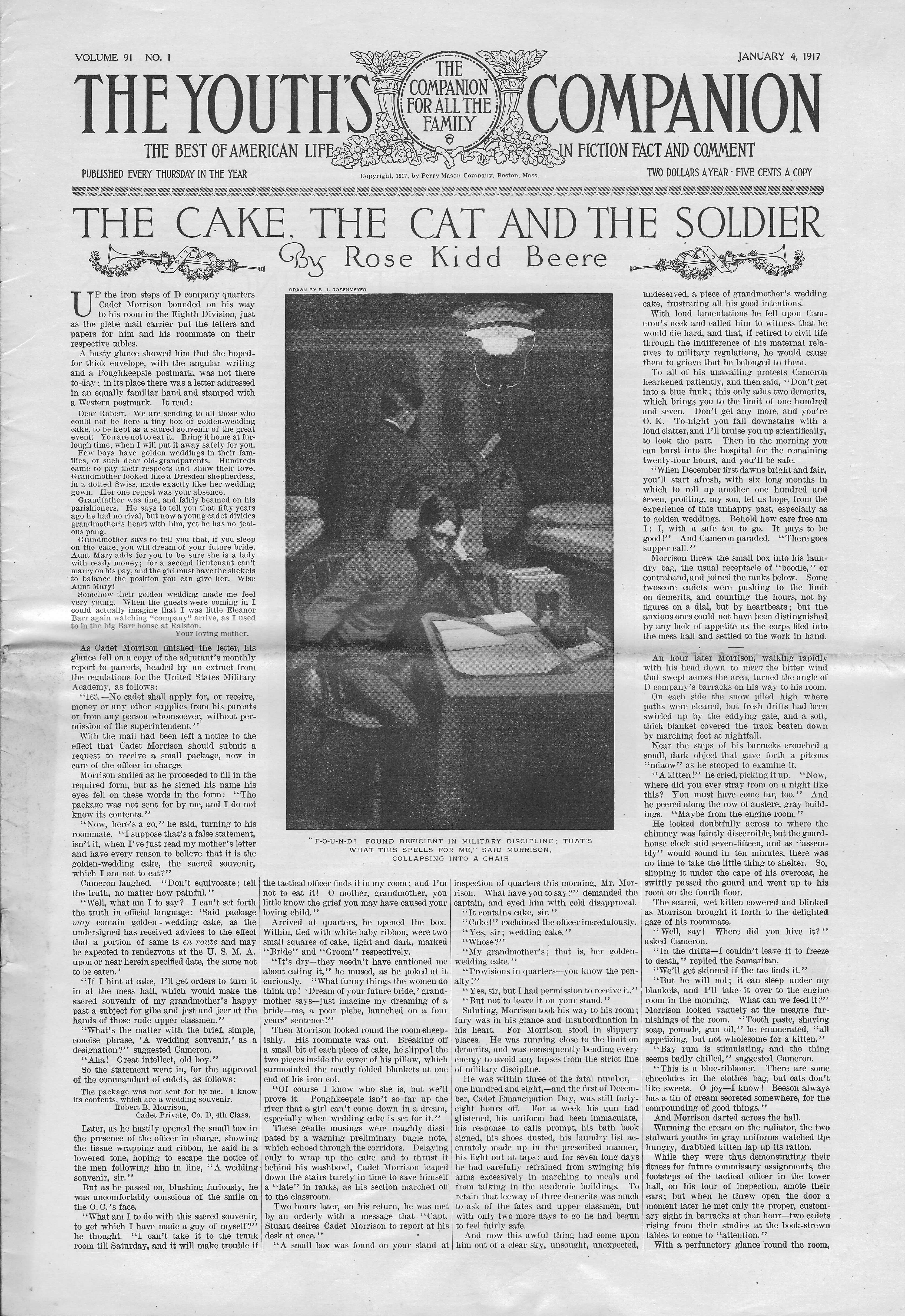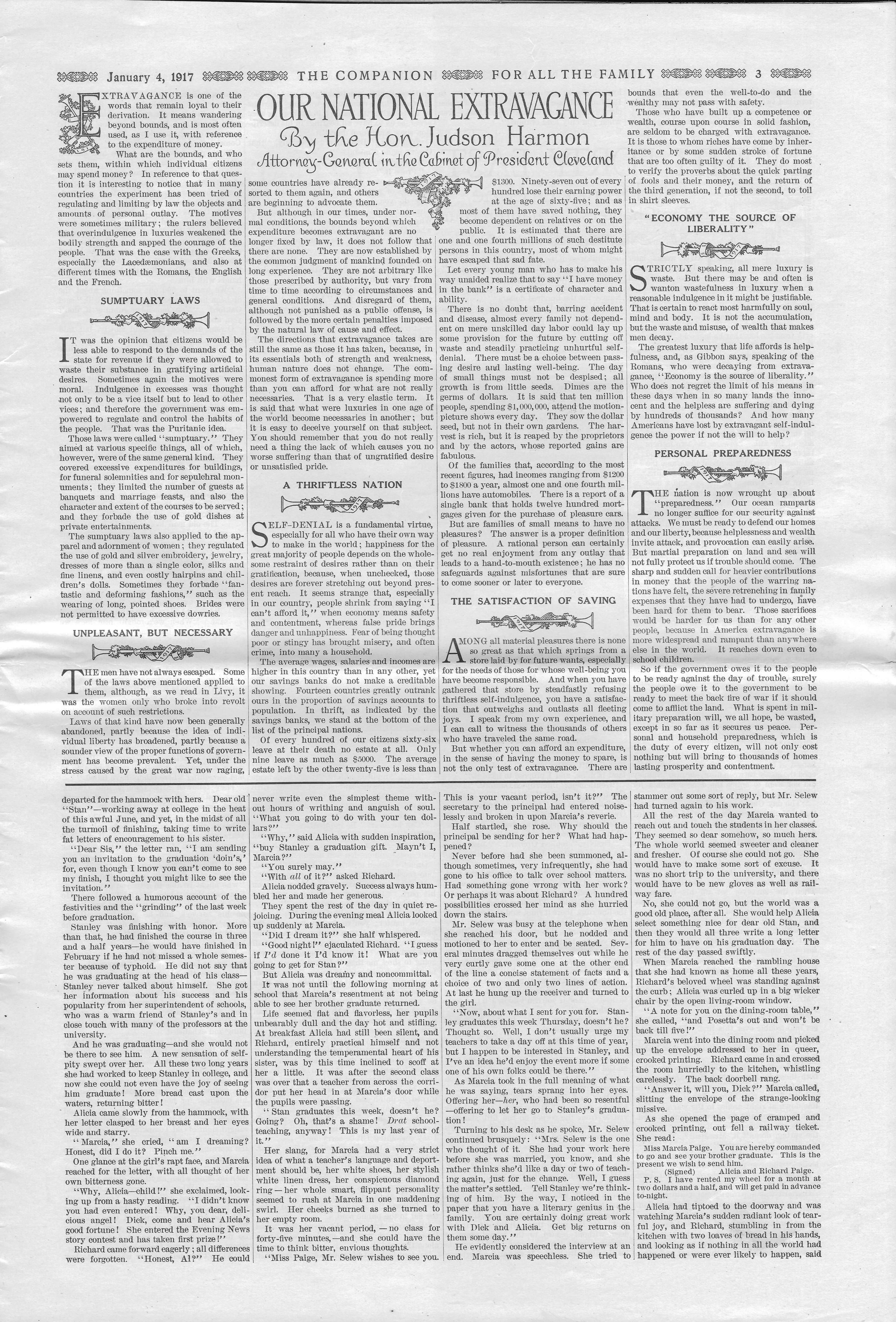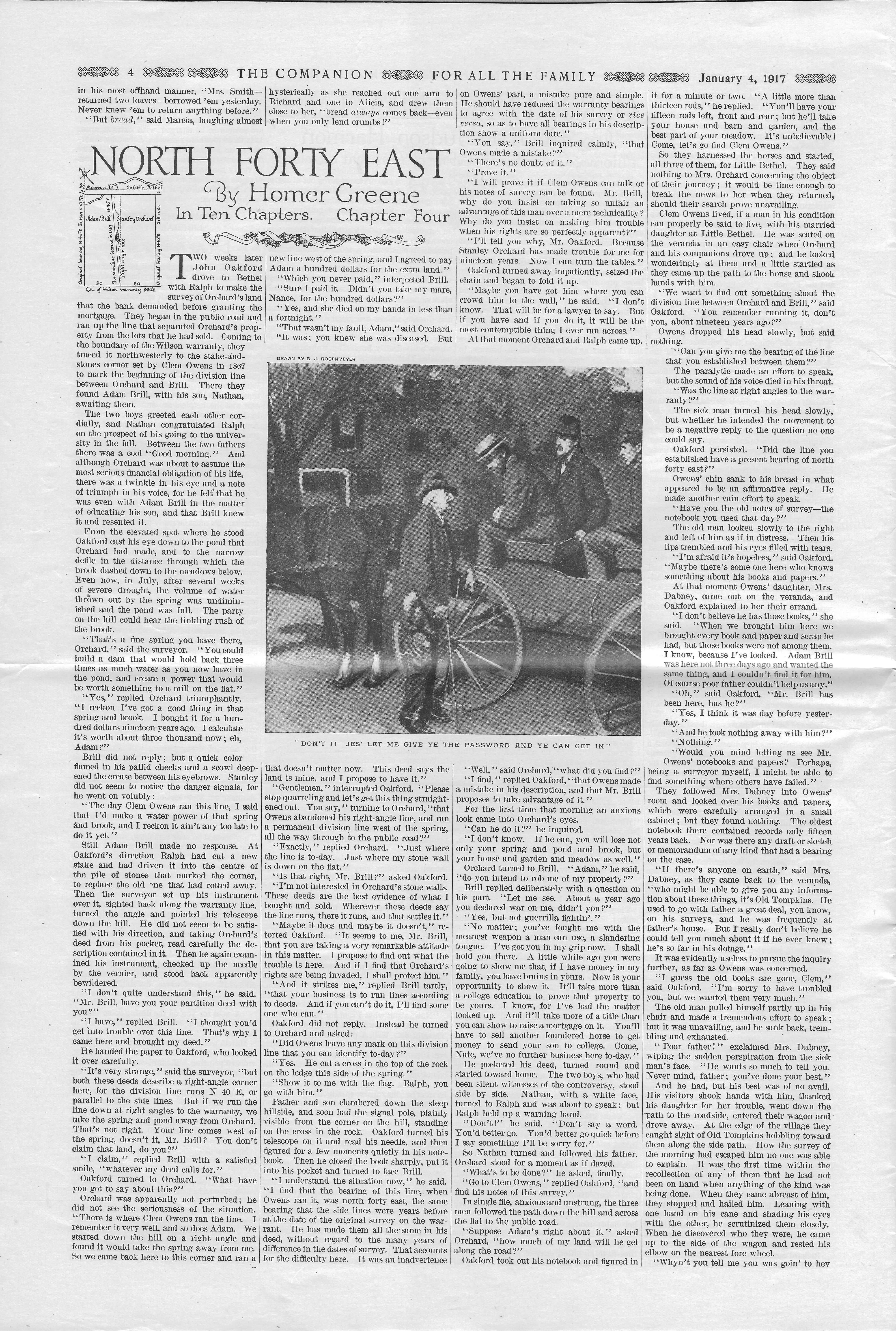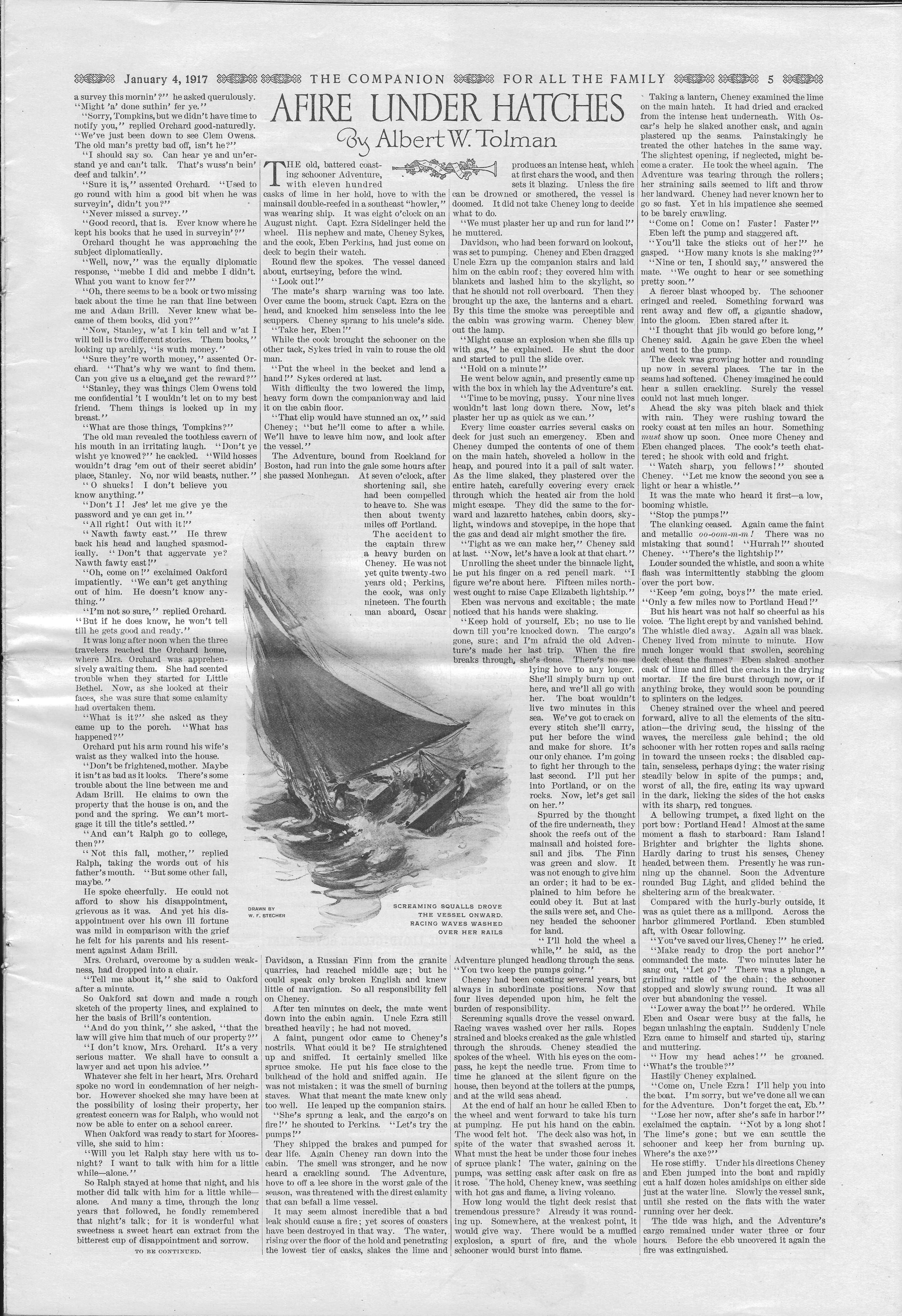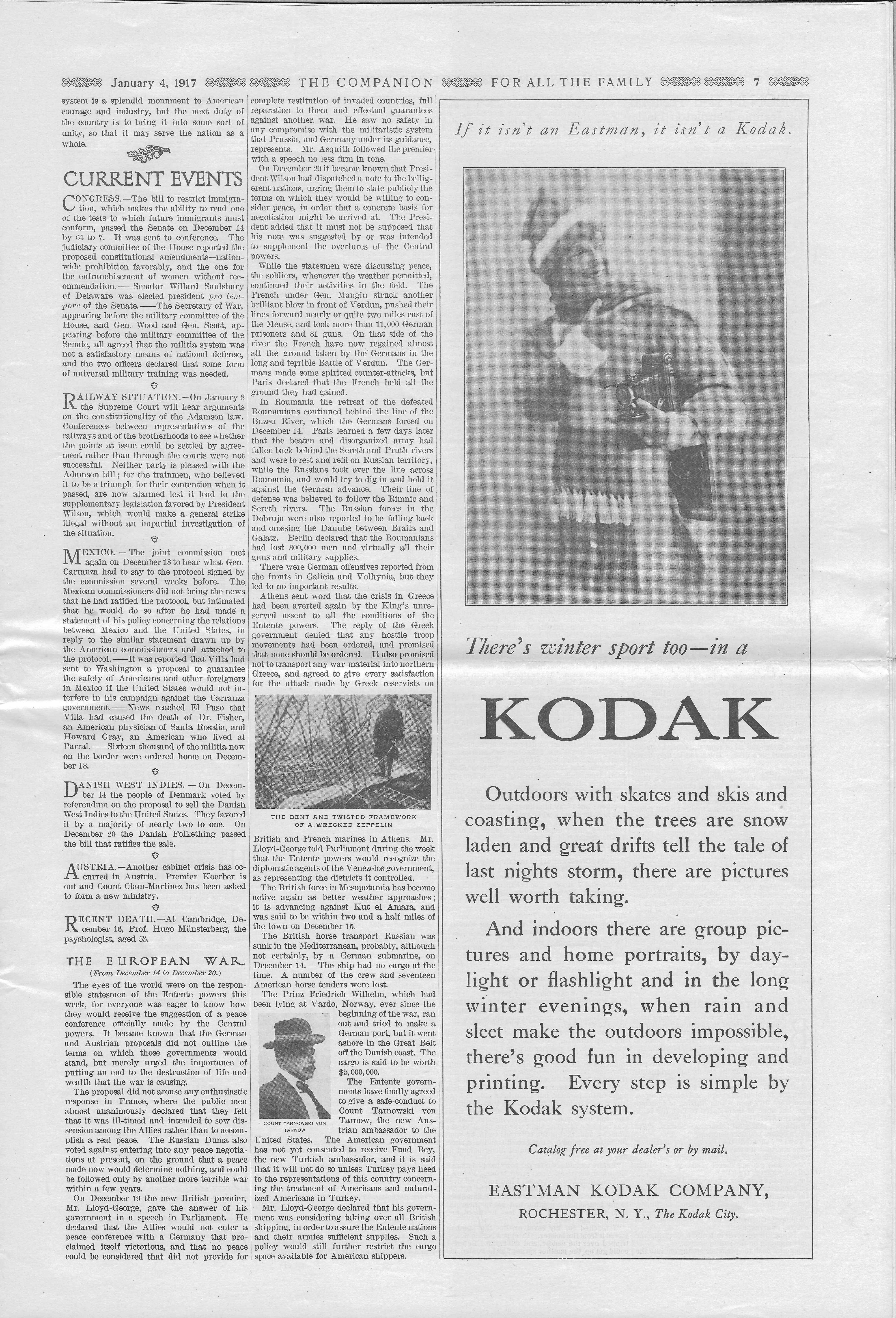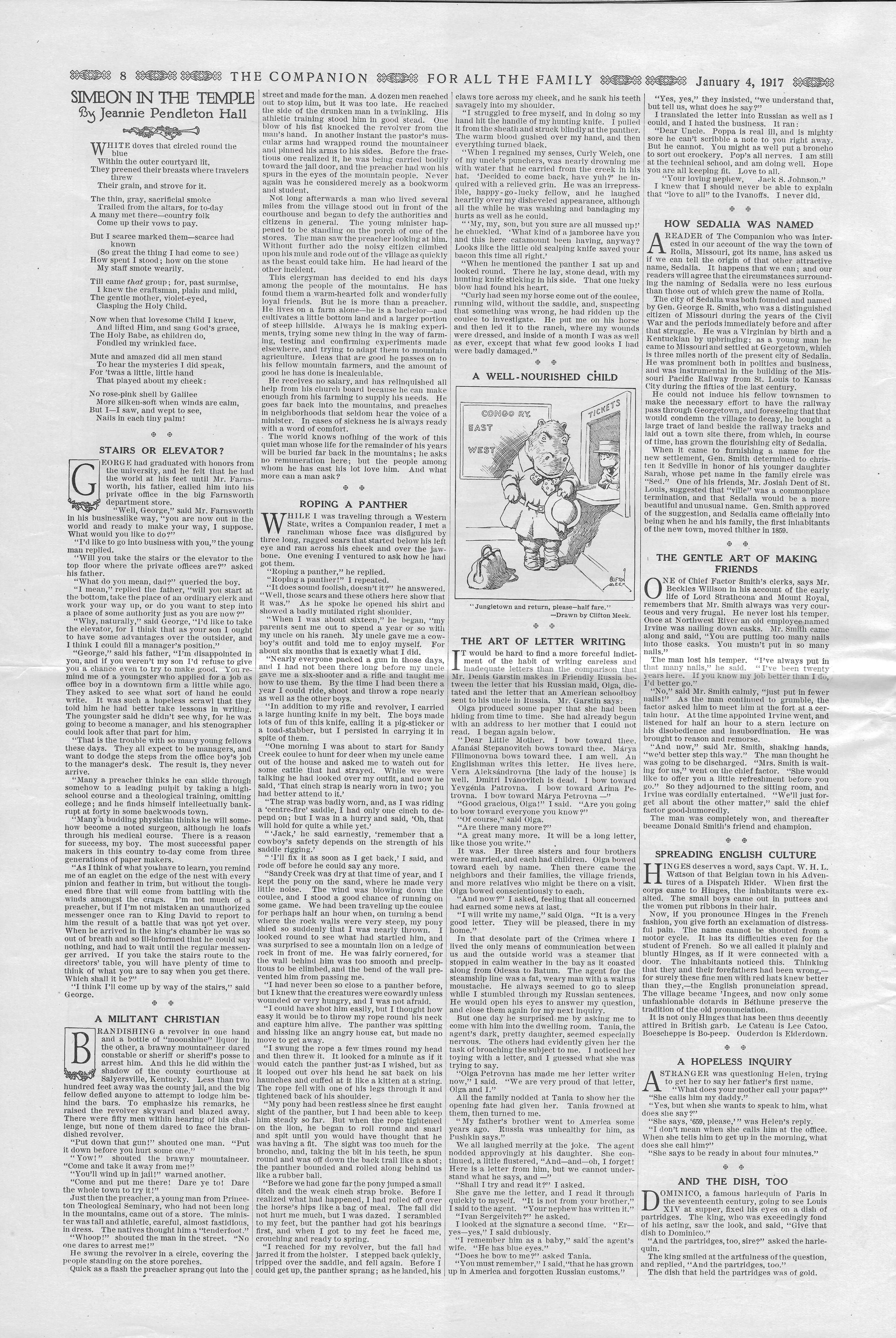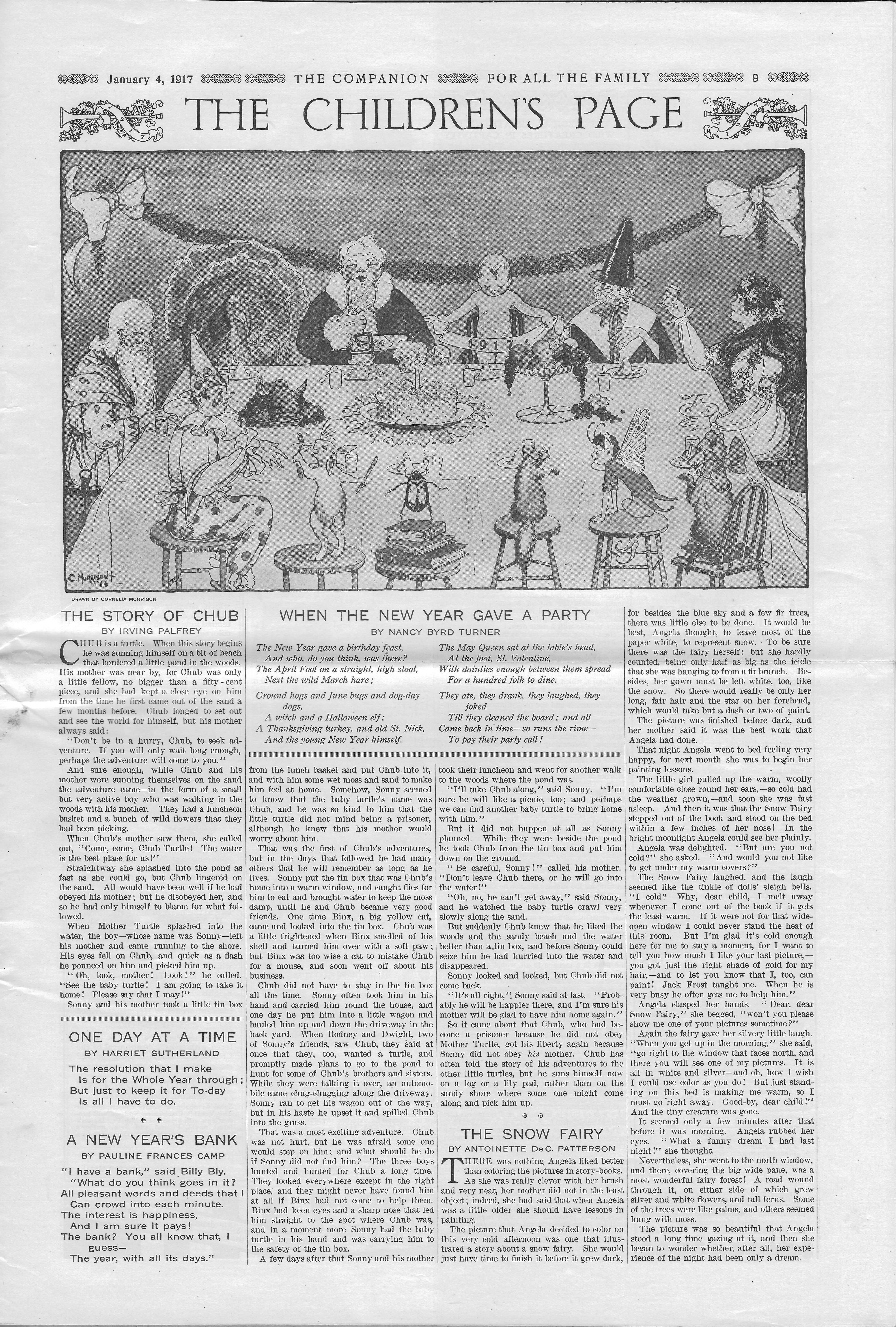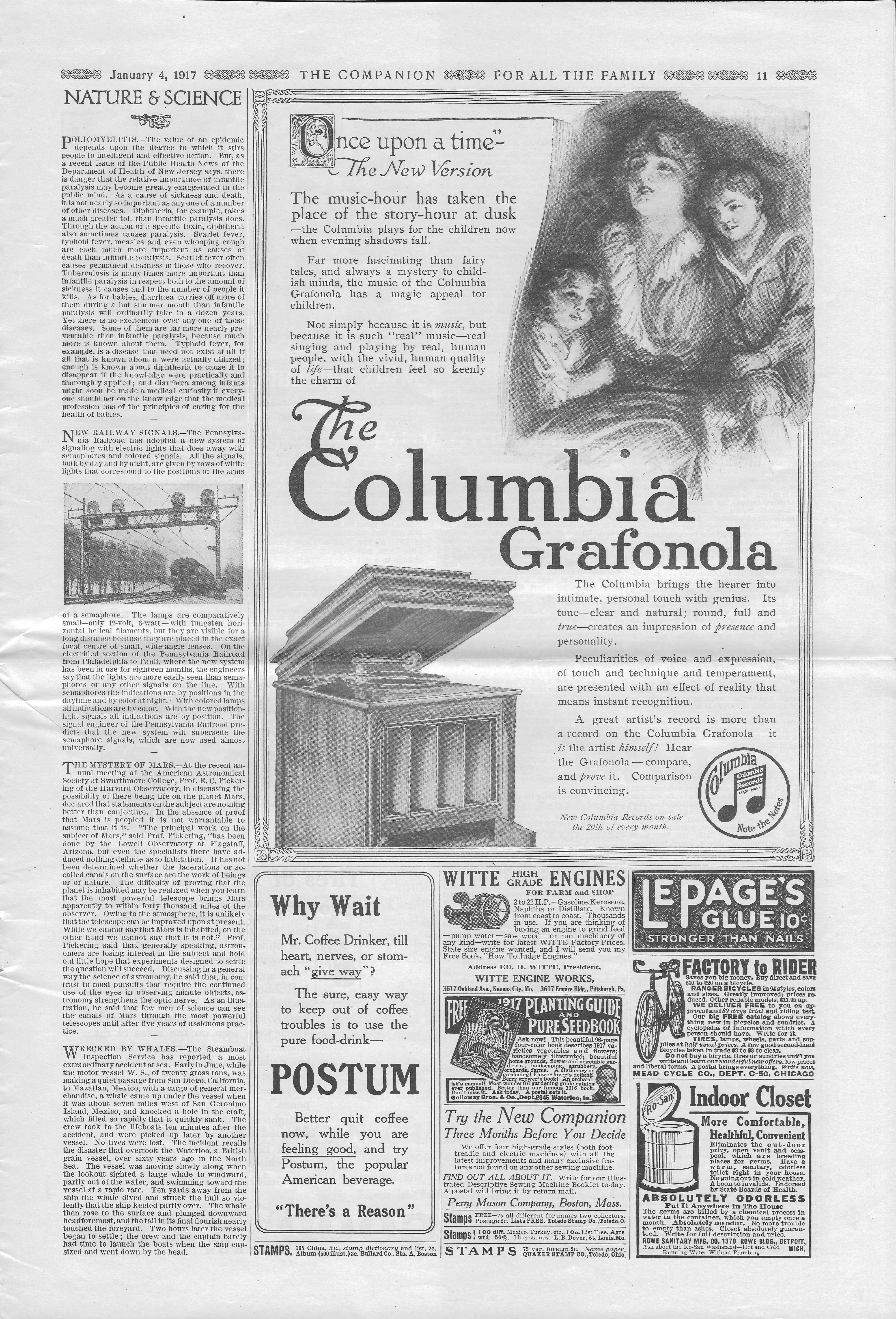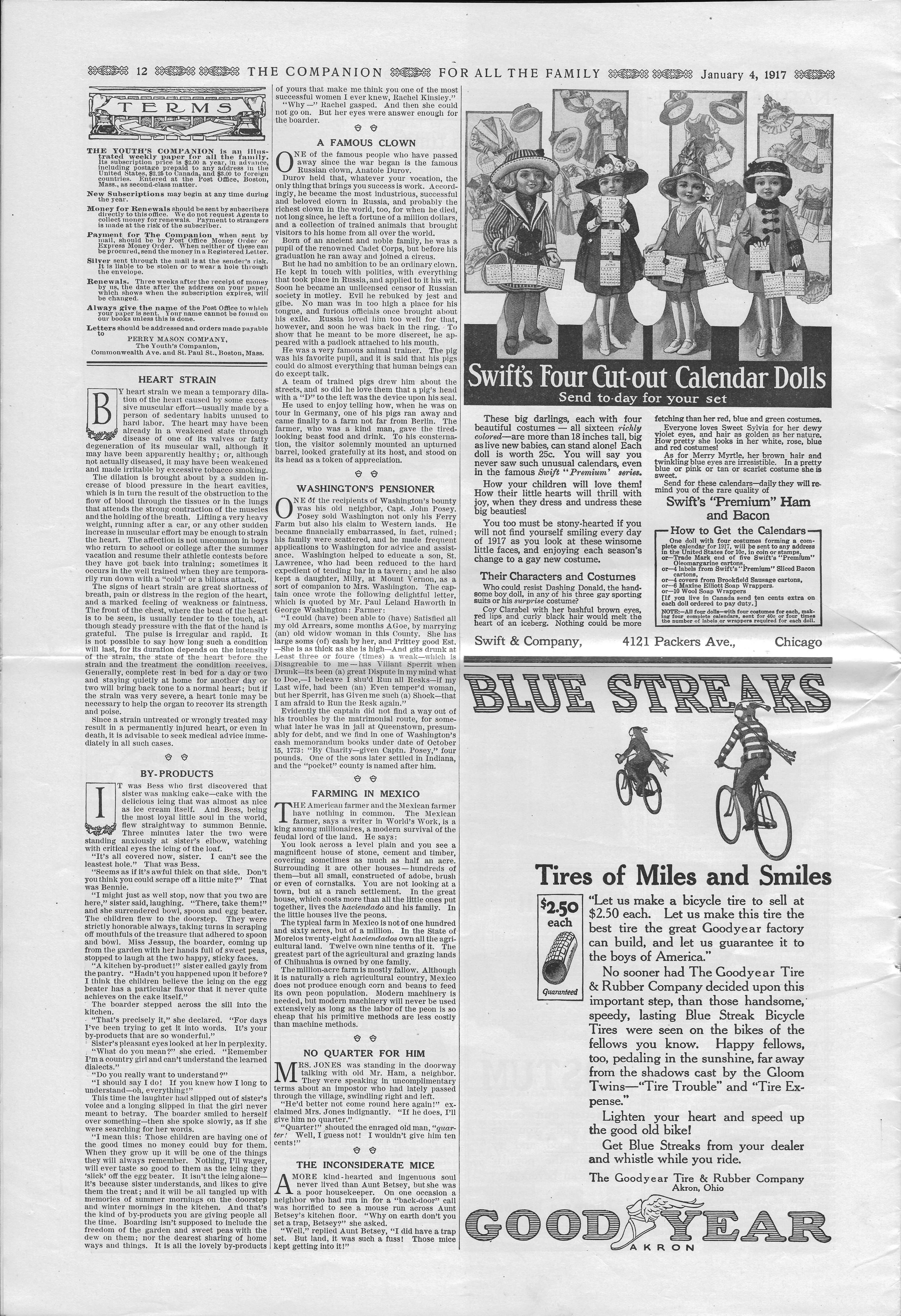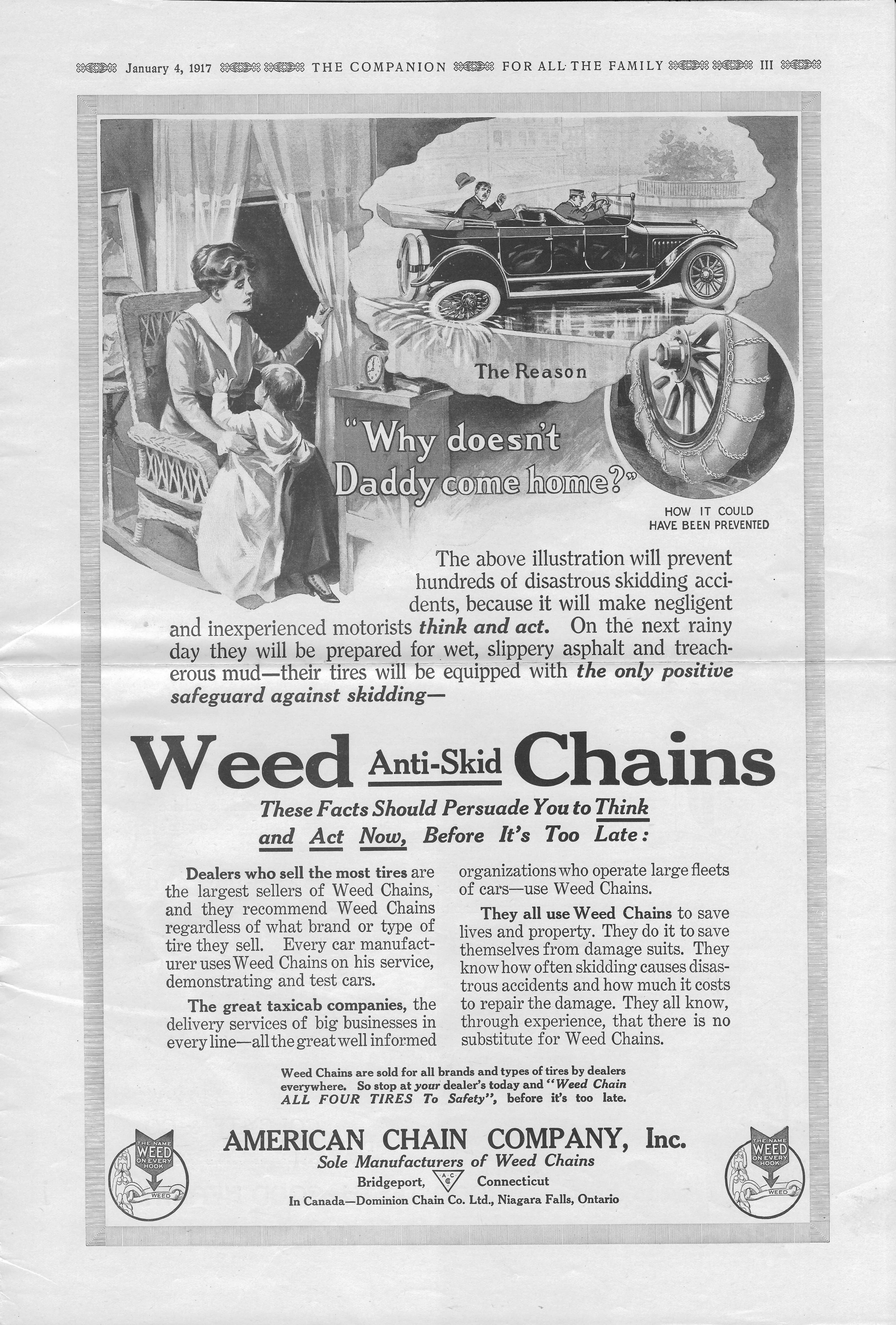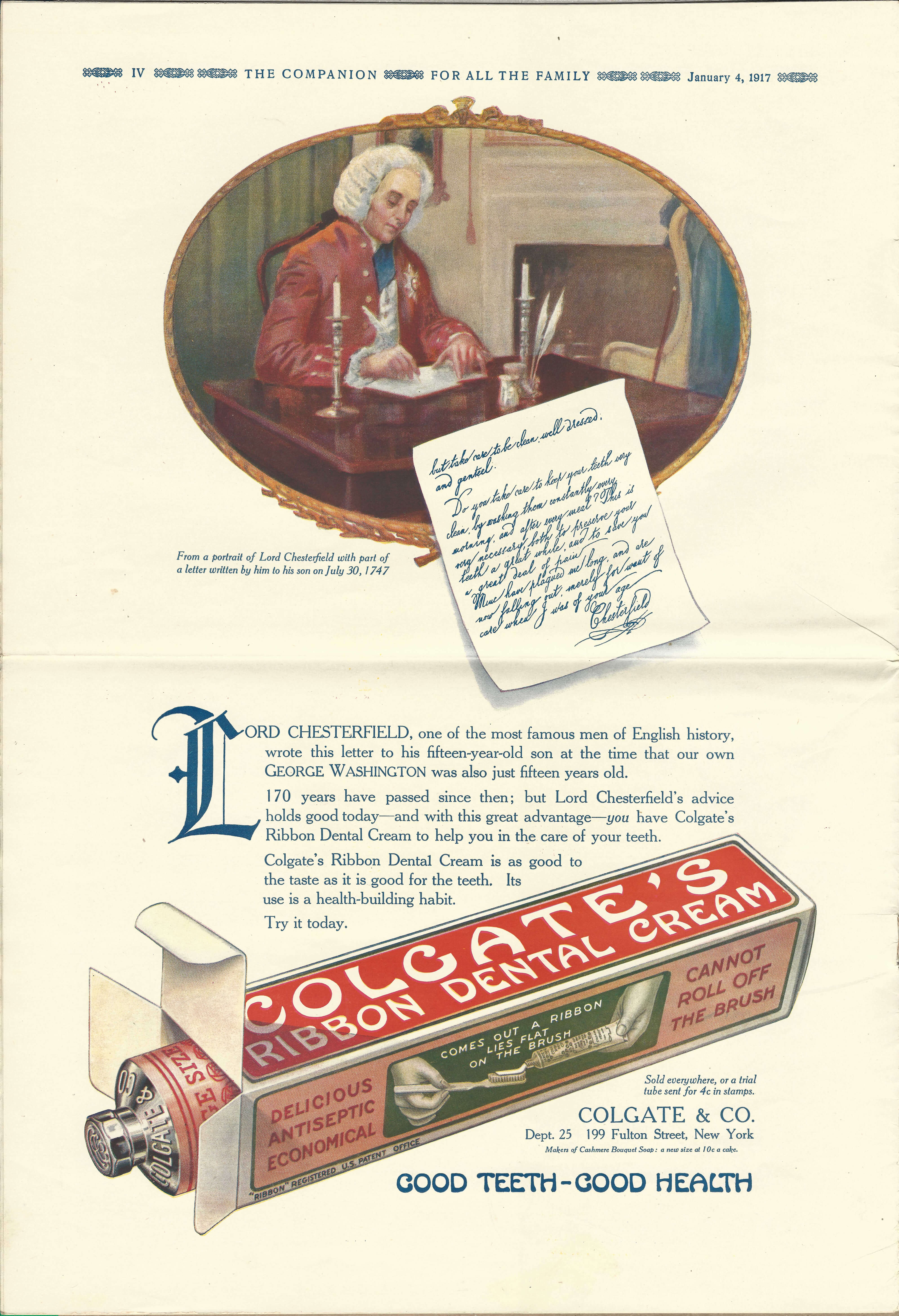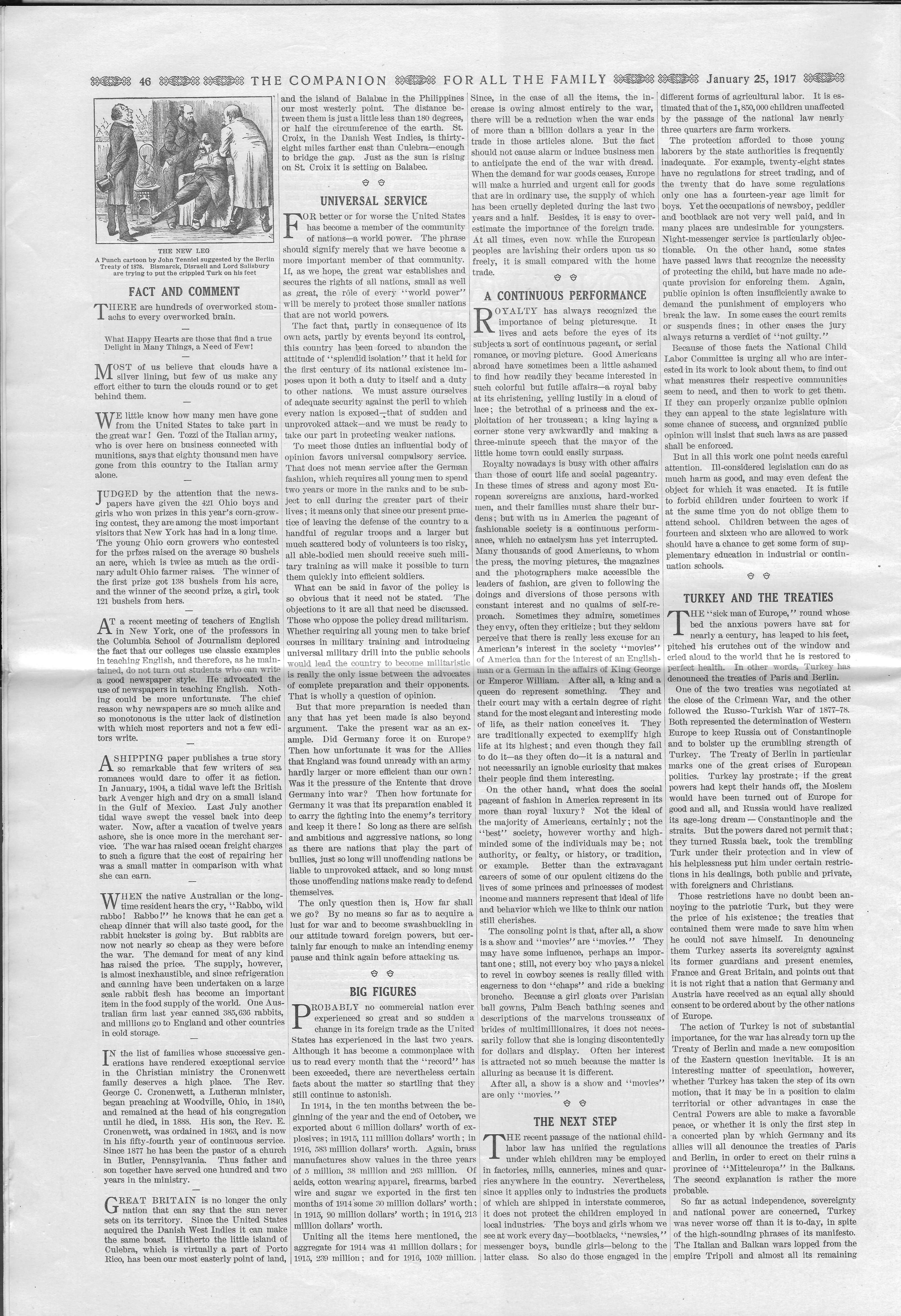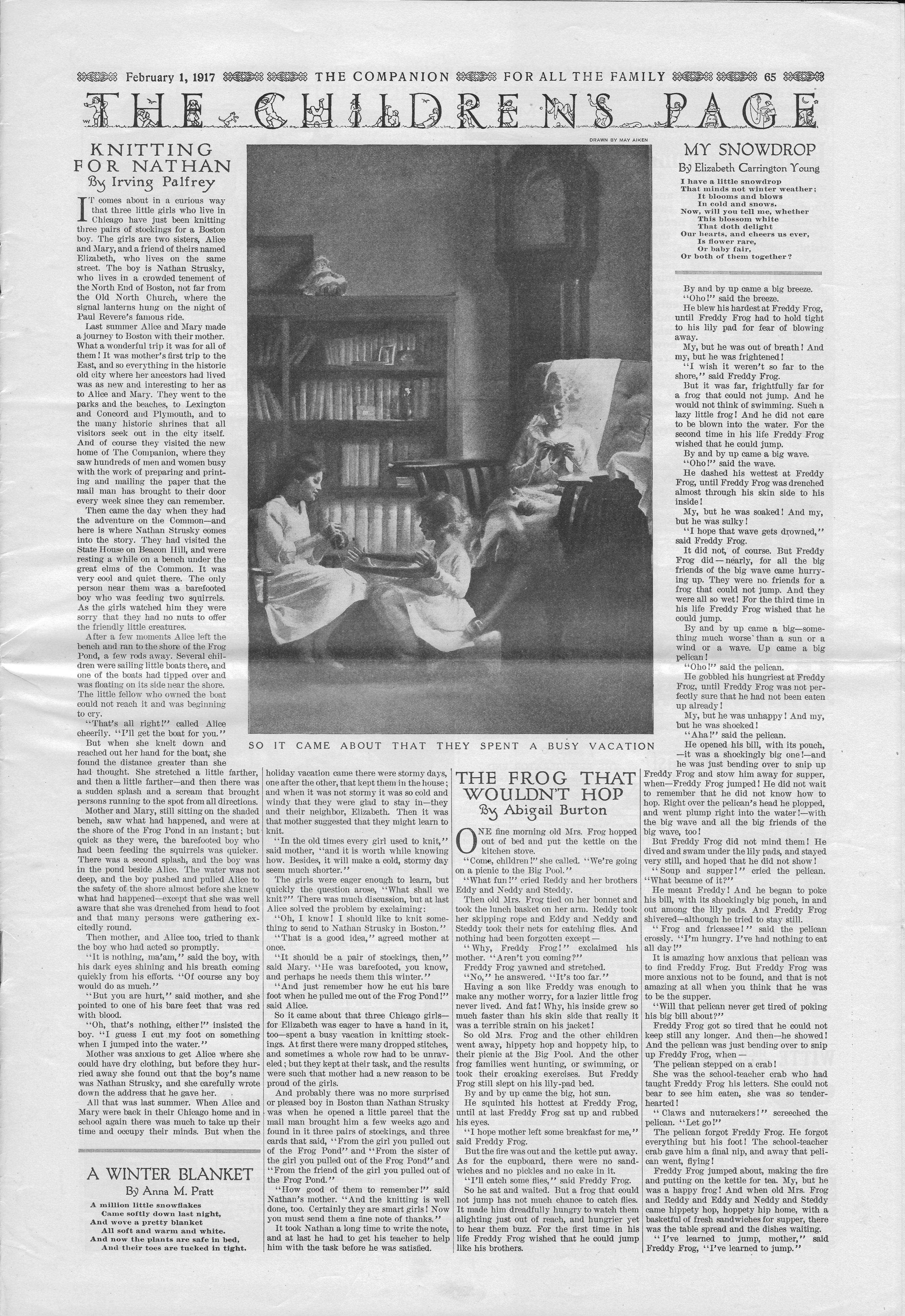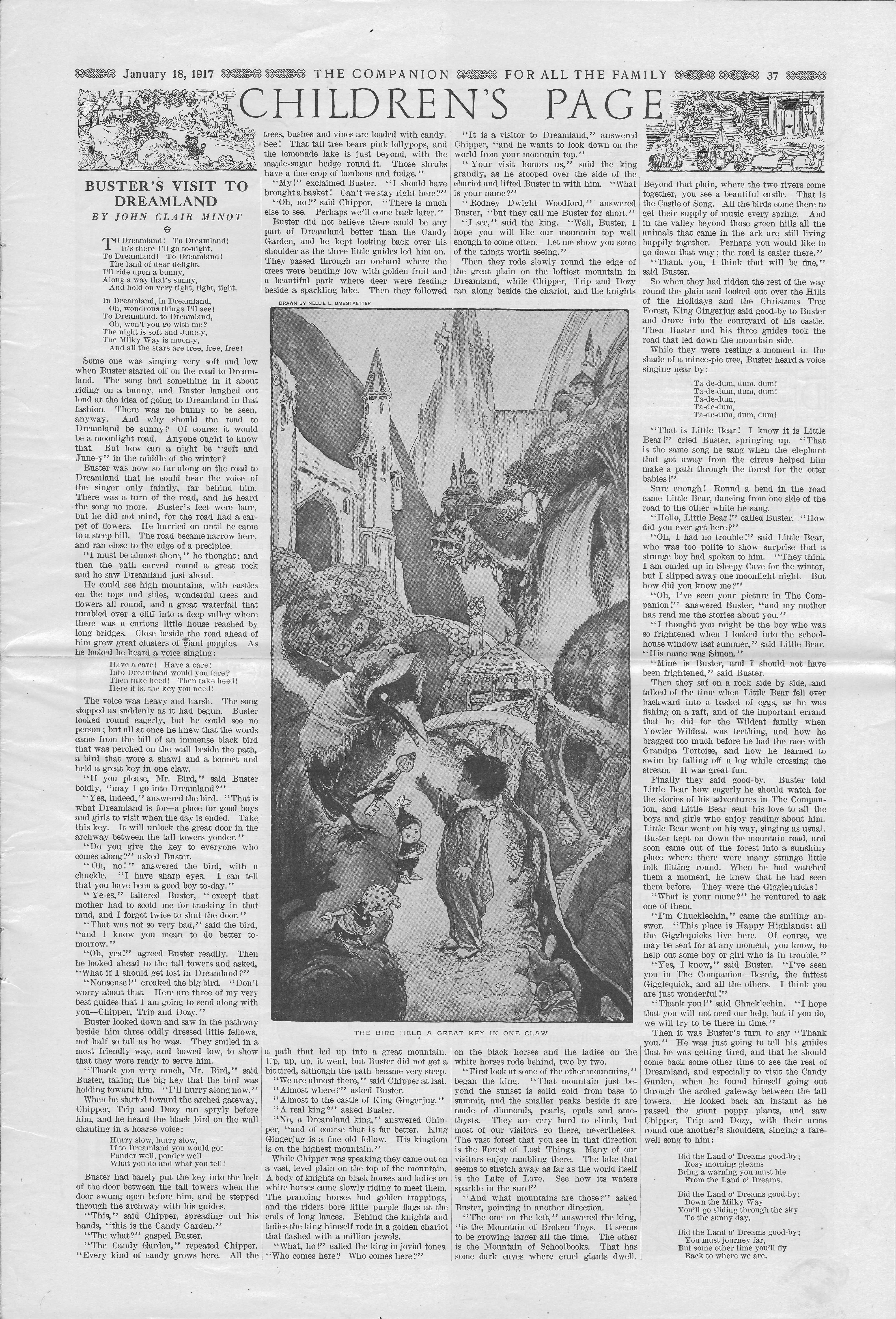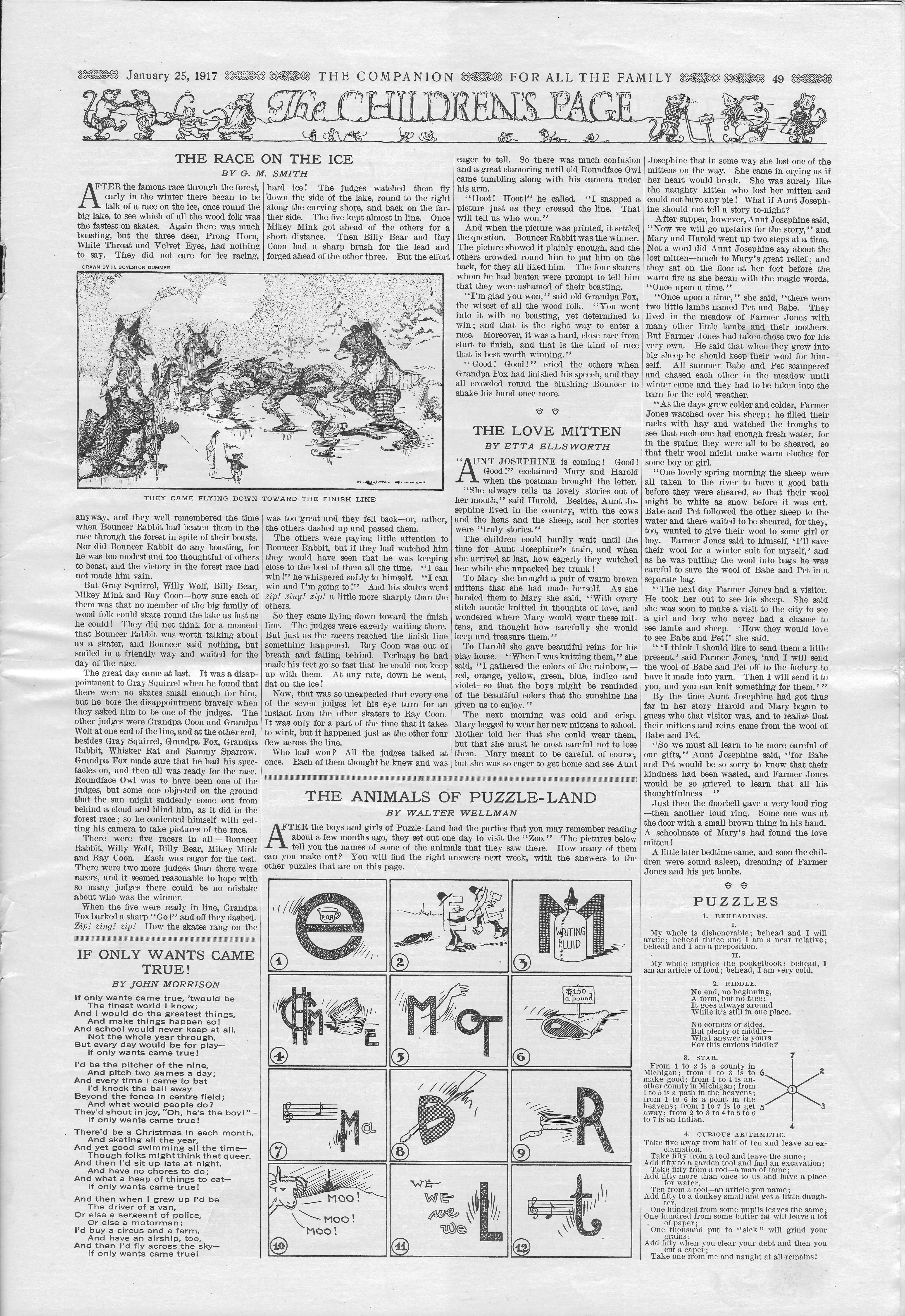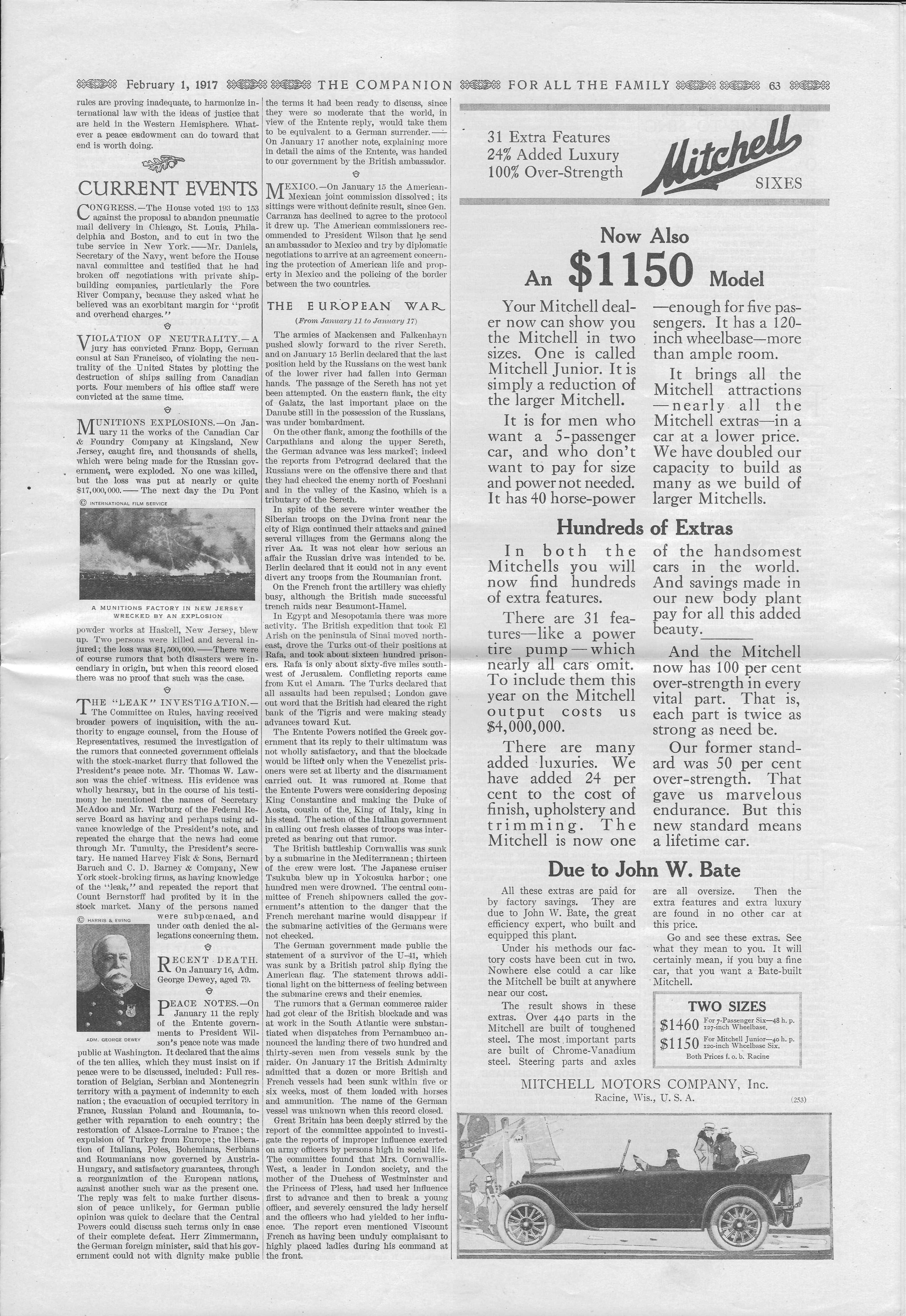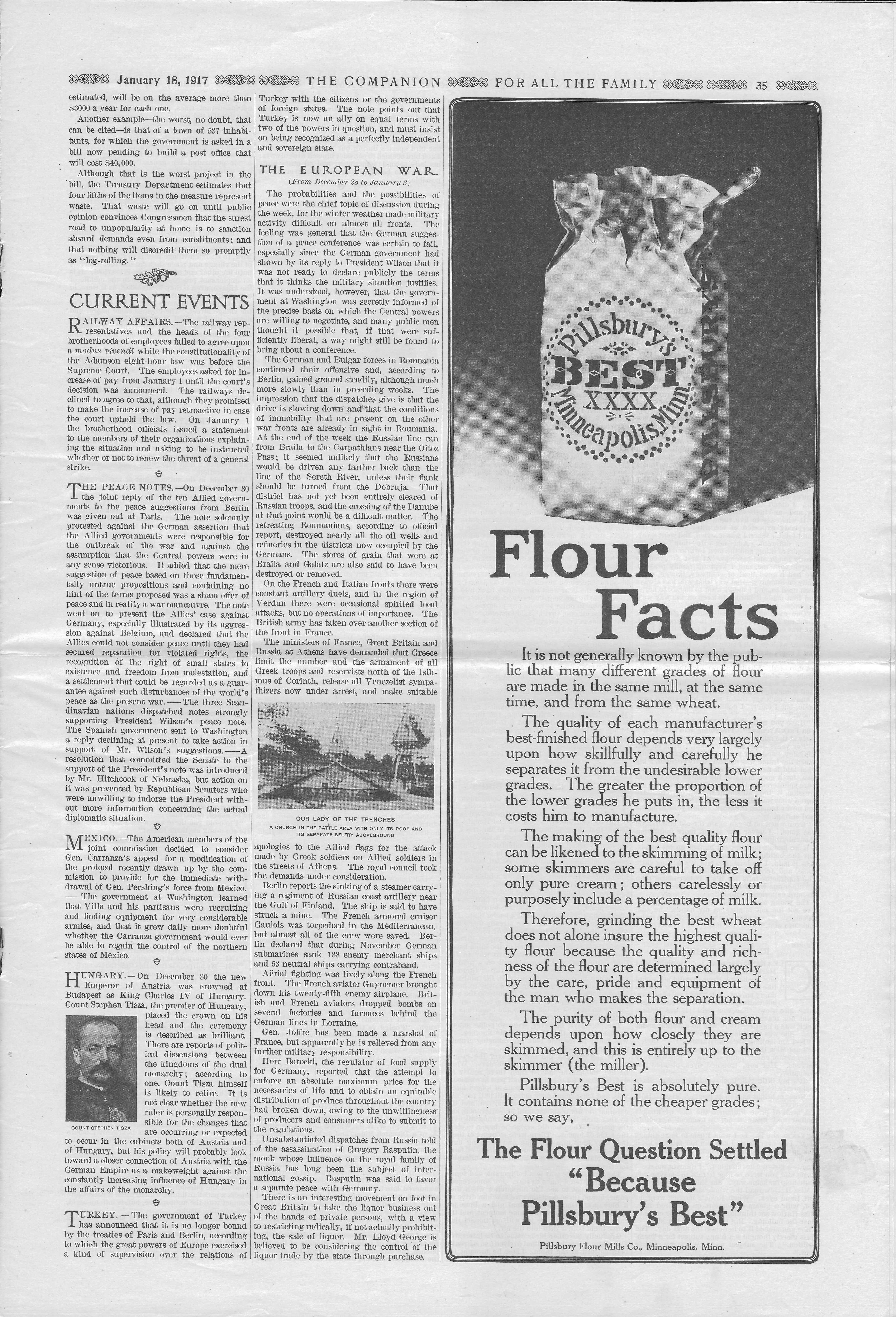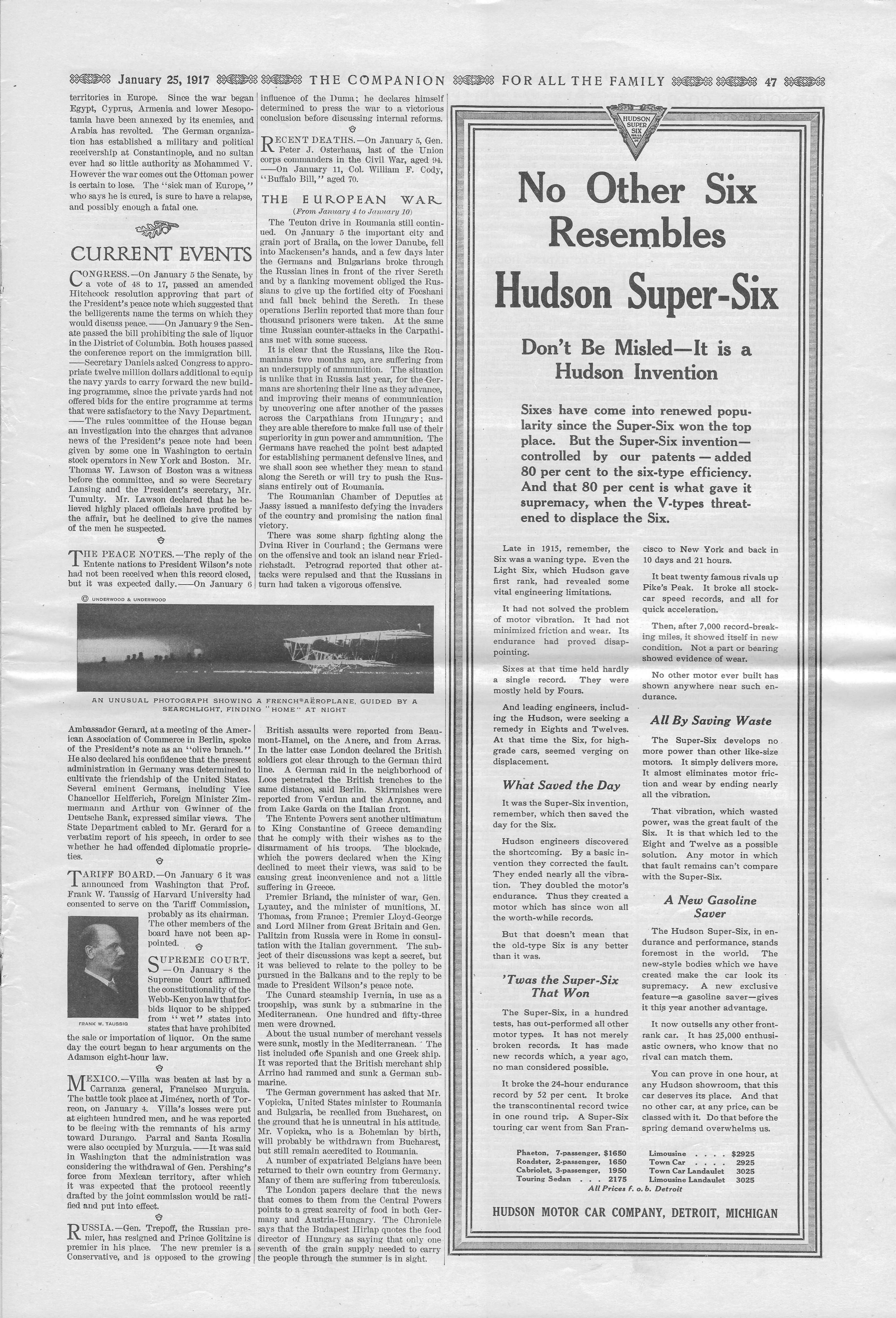The Youth’s Companion is our main source of vintage historical material. An illustrated weekly newspaper, it was published by the Perry Mason Company in Boston, Massachusetts, from 1827 to 1927.
The Youth’s Companion was responsible for the writing and popularizing of The Pledge of Allegiance, in 1892.
Read about how the Youth’s Companion staff wrote the Pledge for the 400th Anniversary of Christopher Columbus’s voyage to the Americas and how the Youth’s Companion created and patriotic traditions about the flag.

It started out as the first publication written for children but evolved into a paper for the whole family, and by 1900 had it over 500,000 subscribers. The Companion was filled with short stories (often in installments), poems, articles on a wide variety of topics, A Children’s Page with songs, stories, puzzles, projects and crafts to make (and sometimes pages specifically for girls or boys), current events, musings about what the future would be like, and terrific advertisements. Jack London, Jules Verne, Emily Dickinson, and a number of other well-known writers published their work in The Youth’s Companion, and it had an enormous influence on the culture and values of the day.
What is the significance of The Youth’s Companion as a historical source?
In this site, we are examining the basic cultural values of the United States, where they came from, how they developed, and how they are at work in our lives today. We know that these values were in existence and recognizable by the early 1800s, because Alexis de Tocqueville described them in his book Democracy in America, written when he visited the United States in the 1830s.
His book is still cited and quoted today, recognized by many as the single best explanation of American values.

They are a window into the issues of the day, what people thought was important for their children to know and value, and what they guessed the future might bring.
Some of the issues they faced are remarkably similar to those challenging us today.
Take the question of immigration, for example. The late 1800s and the early 1900s saw the largest influx of immigrants in American history. By 1910, 15% of the population had been born in a foreign country. Today, we are approaching that number—about 13% in the Census of 2010.
How did the United States assimilate all those immigrants from diverse countries and make them “Americans?” We know that there were “Americanization” classes that taught English and information about American customs and values. In The Youth’s Companions of 100 years ago, we find articles about the effect of trying to deal with so many new immigrants, and an emphasis on the values of individual freedom and hard work.
Many of the articles are so relevant to what is happening is today that one could imagine that they were written today. For example, one article complains that young people need the discipline of hard work that is not necessarily meaningful, but it has to be done. Another article from 100 years ago, warns that the government seems to be taking away some of our freedoms.
We believe that this treasure-trove of Americana should be available to everyone.
These papers are packed with really interesting information, but it is only randomly accessible. Paper copies of single issues and a variety of complete years are available for sale online, and they exist in library collections. However, a digital collection of all the issues of The Youth’s Companion does not exist online, and neither does a digitized index list of their contents.
Enter Gerta Rinker (1864-1949), a remarkable woman who lived in Elvan (now Lovettsville), Virginia, kept over 40 years’ worth of The Youth’s Companions in wooden boxes from her country store. The boxes were left in farm outbuildings for 100 years until they were rediscovered by her family when they were preparing the farm for sale.
As a result, the Gerta Rinker Collection has over 2,000 copies of The Youth’s Companion, probably the single largest collection of complete years still in existence. These papers, from the 1880s to 1921, are generally in remarkably good condition. They are now being scanned and will eventually be available on this website. In the meantime, we will present material from the papers, with commentary and reflections on how these issues and ideas are relevant to our cultural values today.
